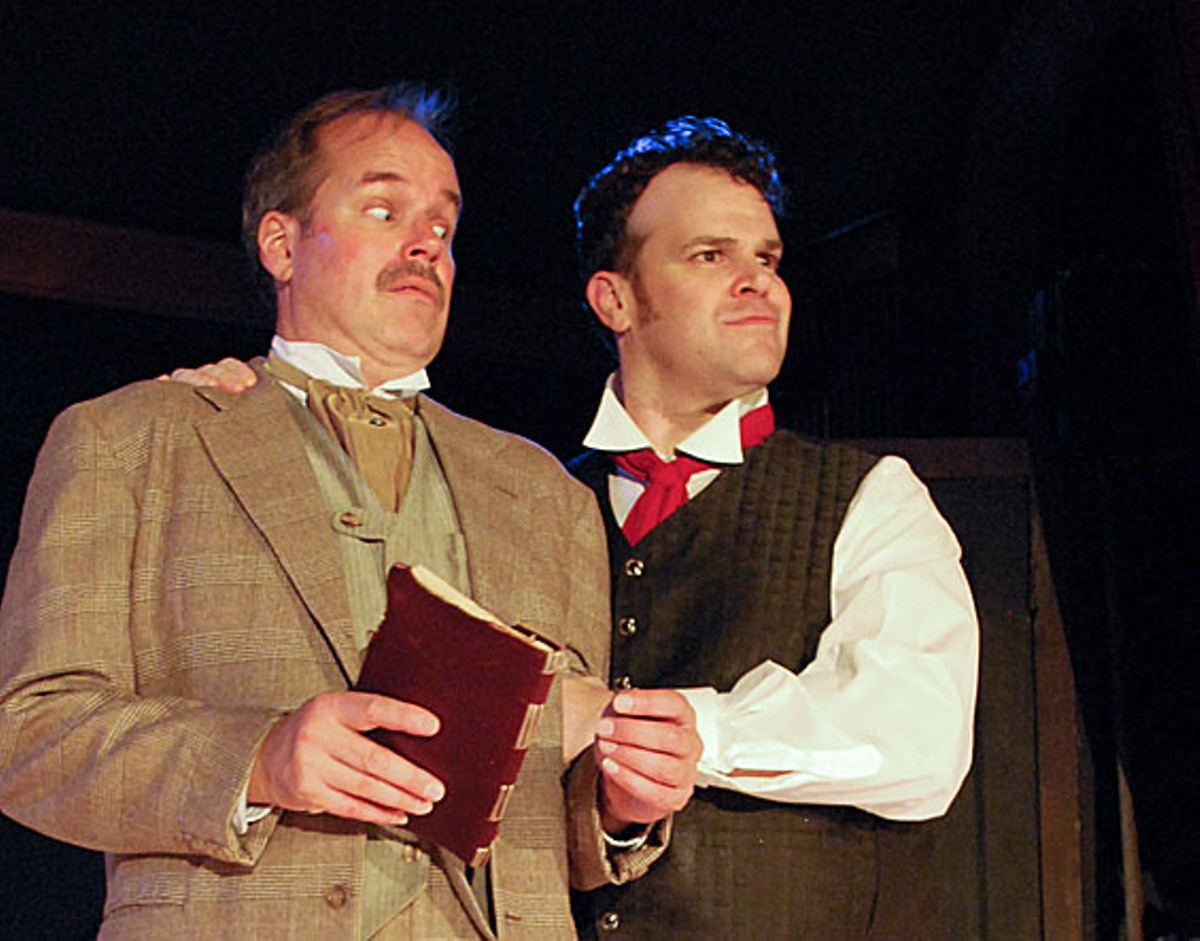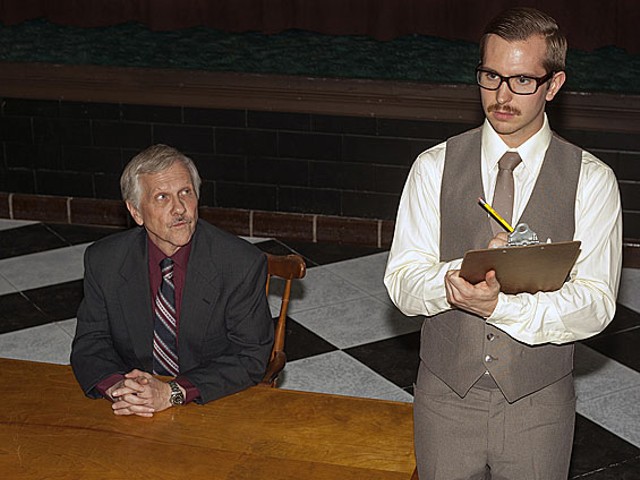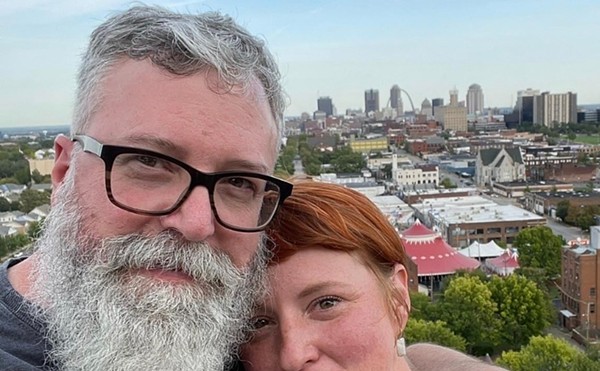So. You're sitting in a dark theater, watching as Mr. Kipps (B. Weller) and the Actor (Jared Sanz-Agero) attend an imaginary funeral on the floor in front of the stage. An Anglican vicar drones some final words for the departed, an elderly recluse from the Victorian age. Out of the corner of your eye you pick up some movement in the darkness. Suddenly an eerie figure with a dead white face floats silently past you, twitching its fingers into spasmodic claws. You fight the urge to bolt right out the door and into the night and as cold sweat pricks your scalp.
Oh, you poor timid thing. It's going to be a long night for you.
Many plays attempt to be scary, but few succeed as totally as Slightly Askew Theater Ensemble's production of The Woman in Black. Director Rachel Tibbetts and her small cast strike at that hollow fear that starts in the pit of your stomach and spreads chill tendrils throughout your useless limbs and locked jaw. But there's not just terror here; The Woman in Black is also about how the power of a well-told story transforms you from a theatergoer to an active player in the proceedings.
Mr. Kipps is a terrible storyteller, yet he has one of the all-time fantastic ghost stories to tell. Kipps is proper and stiff and overly apologetic for his failings, and he's so tormented by the need to get this story out to his family that he hires an actor to tutor him in storytelling.
The Actor here is a forward-thinking Victorian thespian who believes in the primacy of imagination. Use your imagination as an actor to recall personal experience, and you'll engage the imagination of your audience, he assures Kipps. And so the two of them begin to play out Kipps' story, with the Actor taking on the role of Kipps and the real Mr. Kipps playing all the other roles. It plays more clearly than it sounds, especially because Weller and Sanz-Agero manage the switch so adroitly. Sanz-Agero uses distinct voices and accents for his two roles, while Weller cycles through a half dozen roles and accents with nary a flaw.
And so we see a younger "Mr. Kipps" sent to the wild marshlands of England's coast in order to attend the funeral of a wealthy client. The deceased was a recluse, so distrusted that the mere mention of her name makes the locals clam up. At her funeral Kipps sees the aforementioned Woman in Black, which he soon learns is a dread occurrence. But why?
That mystery unfolds slowly in false starts and reluctant conversations with locals. Back in the real world, the Actor becomes entranced by the tale. But the deeper he and Kipps go into the past, the more uncomfortable Kipps becomes. The more we see of what happened in the old woman's house, the more uncomfortable we become.
That tension is stretched and snapped unpredictably by Tibbetts and company, and it is accomplished by simple measures — the use of darkness, protracted silence, judiciously placed sound effects — and of course, our own imaginations. Oh, and by the always-shocking arrival of the Woman in Black, who melts into that darkness with supernatural silence and grace.
Don't look her in the eye if you don't have an escort back to your car is all I'm saying. Trust me.
Editor's Note: Riverfront Times has an immediate need for a freelance writer to pen weekly theater reviews for the print and online editions of the RFT and coordinate our performing arts coverage. Interested candidates should email a resume and clips (subject line: "theater critic") to [email protected].






